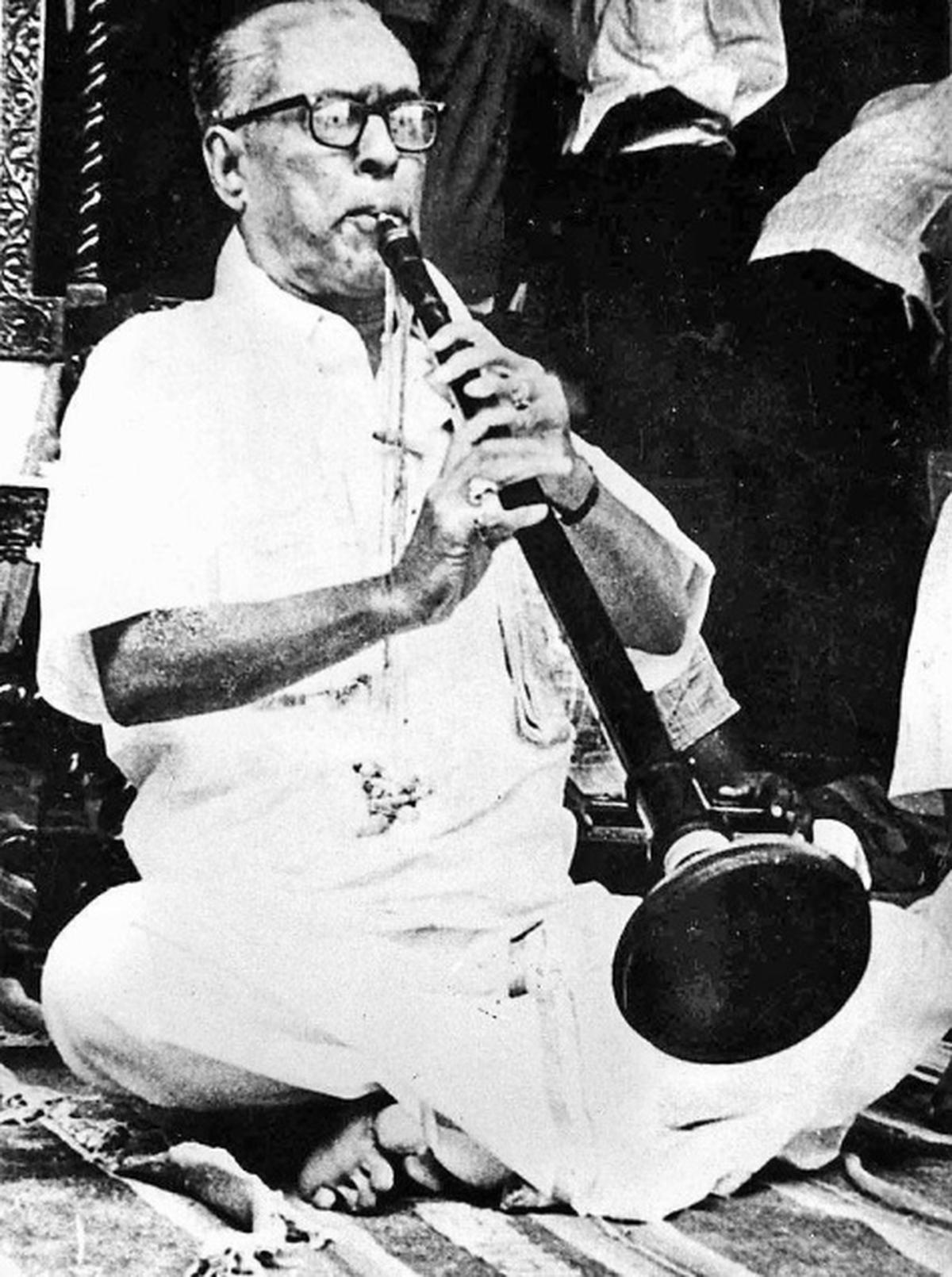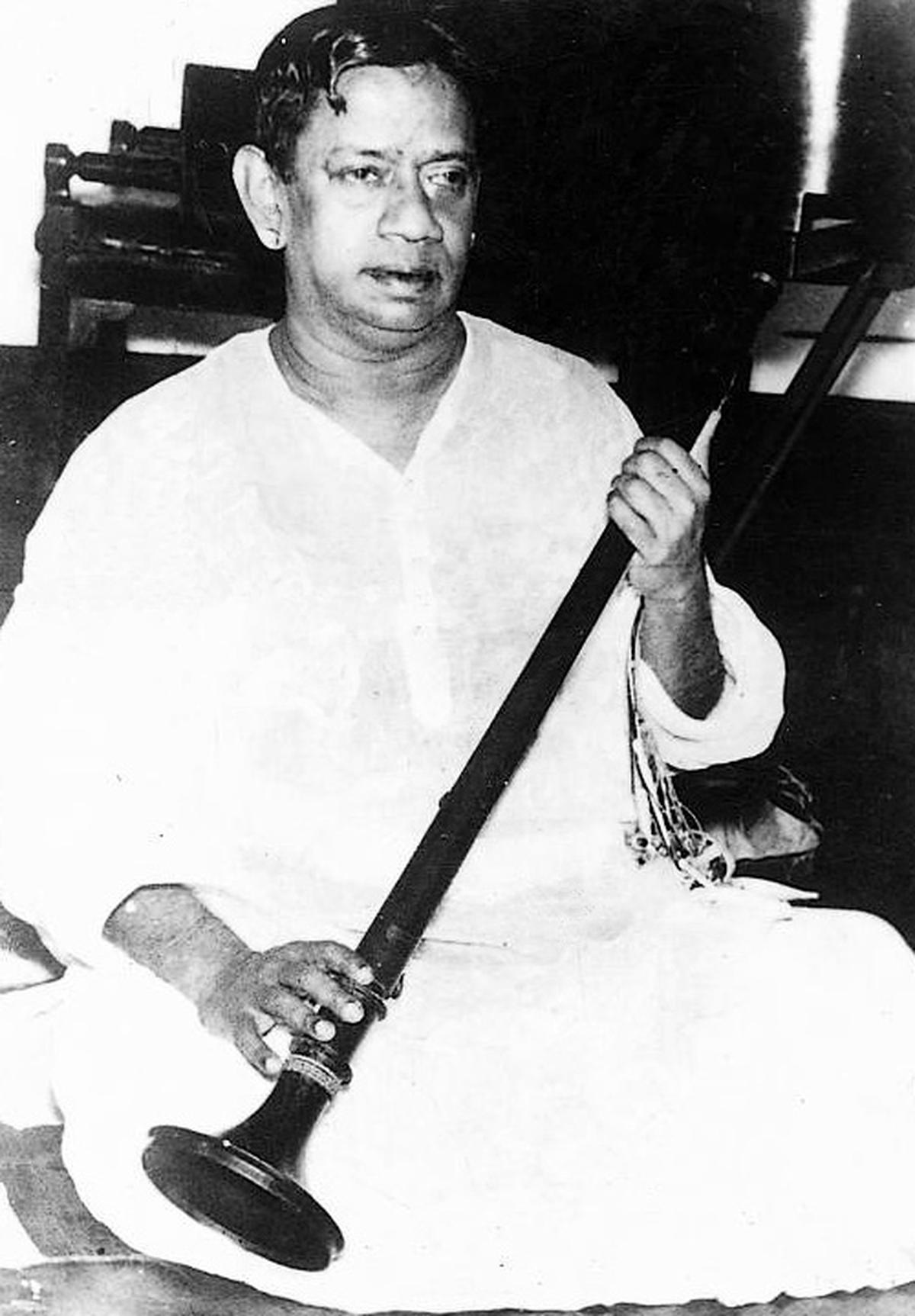Nagaswaram scholar Vedaranyam Vedamurthy. , Photo Credits: Illustration: Sai
If a list of the greatest nagaswaram artists of all time is made, the name of 100-year-old Vedaranyam Vedamurthy will definitely be included in that list. Born on September 10, 1924 and living only for 38 years, Vedamurthy etched his name forever through his significantly modified instrument and its unique tone. He adopted a style that was based on calmness and subtlety.
Vedamurthy’s life is well documented in BM Sundaram’s monumental work Mangala Isai Mannargal. His maternal grandfather was the versatile Ammachatram Kannusami Pillai, under whom nagaswaram expert TN Rajaratnam Pillai honed his skills. Vedamurthy trained in both singing and nagaswaram under Kannusami’s son AK Ganesh Pillai.
As a young man, Vedamurthy had acted and sung in a few films, including Thayumanavar, starring M.M. Dandapani Desikar in the lead role.
Interestingly, Vedamurthy’s name is the first to come to mind when talking about the sweetness in the tone quality of the nagaswaram. Yet, all accounts suggest that he was not naturally gifted with a sweet tone, and in his early days, his style was more focused on showing mastery over complex arithmetic patterns. It is also mentioned that he inserted a metal extension between the ulavu (pipe with seven holes for playing notes) and the anusu (conical section at the end) in the nagaswaram, resulting in a rich, ringing tone.
While it is true that Vedamurthy had made some modifications to the instrument, his efforts in doing so have been greatly underrated. Fortunately, the modified instrument is still safe with his brother Thavil Ustad Vedaranyam Balasubramaniam. On examining it, some important details have come to light.
Modified tonal quality

Tiruvengadu Subramanyam Pillai. | Photo courtesy: The Hindu Archives
According to Balasubramaniam, the original instrument was a gift from nagaswaram legend Thiruvengadu Subramaniam Pillai, and its original pitch was in three kattai (scale). While the metal expansion brought the pitch down, it must be noted that the natural pitch of the modified instrument was much higher than what we hear in the recording (about 1.5 kattai). The sound of the double reed (seevali) added to play the nagaswaram is neither the natural sound of the modified instrument nor the one that Vedamurthy played on in his concerts. It is clear that the modifications he made were not of the ‘plug and play’ type. Rather he had to compensate for the dissonance with his blowing. It is with this insight that Vedamurthy’s triumph of achieving his desired pitch must be appreciated.
This leads us to the question, why would an artist bring in features that would make playing a naturally nuanced instrument difficult? Unfortunately, we do not have direct sources to answer this. However, a few recordings have cemented an undisputed place for Vedamurthy in the world of music, indicating that his quite distinct ‘aesthetic choices’ while exploring ragas may have led him to modifications despite his limitations.
Entering the world of music when TN Rajaratnam Pillai’s style was sweeping the Carnatic music scene, Vedamurthy’s choices were entirely different. Unlike long phrases and elaborate elaborations on the higher octaves that showed off the majesty of the instrument, Vedamurthy chose to paint his raga canvas with precise yet delicate notes. Meaningful pauses between his phrases gave his renditions a mystical charm. His elaborations were mostly in the middle register, only occasionally touching the higher register notes and not spending much time on them. The recordings and playlists we have, though limited, indicate that his selection of ragas (e.g., Surutti, Nattaikuranji, Sahana and Dhanyasi) matched his chosen playing style.

Nagaswaram Vidwan TN Rajaratnam Pillai has taken Carnatic music world by storm with his unique playing style. | Photo Courtesy: The Hindu Archives
Jarus on nagaswaram
In veena, handling the jaaru – a type of gamaka produced through seamless sliding from one note to a relatively distant note, produces rounded sound effects as it enables performers to glide smoothly over the strings. But producing the jaaru with the same effect on nagaswaram can be quite challenging. Vedamurthy’s handling of such slides (for example the slide for pa se re in sahana) has led many to define his style as ‘playing the veena on nagaswaram’.
In his time, it was probably the norm that the raga alapana took centre stage. And even when played before a kriti, the focus was on exploring the raga and not actually keeping the kriti chosen as the central theme for the raga performance. Vedamurthy differed in this aspect too. His approach was unique and there was a sense of balance and connection in the duration of the raga alapana as well as the content of the performance in relation to the kriti that followed. His adherence to a slower approach was seen in the selection of slower kalapramana (tempo) than usual for many pieces, not only in the kritis, but also in the Javalis and Tiruppugazhs.
Vedamurthy introduced his modified instrument at the Arunagirinathar festival in Tiruchi in 1952. His career with this instrument lasted less than a decade. Probably, less than 20 hours of his recorded music are in circulation. But, those recordings shine so brightly that his name remains among the greatest even six decades after his demise.
Published – September 20, 2024 12:10 pm IST
